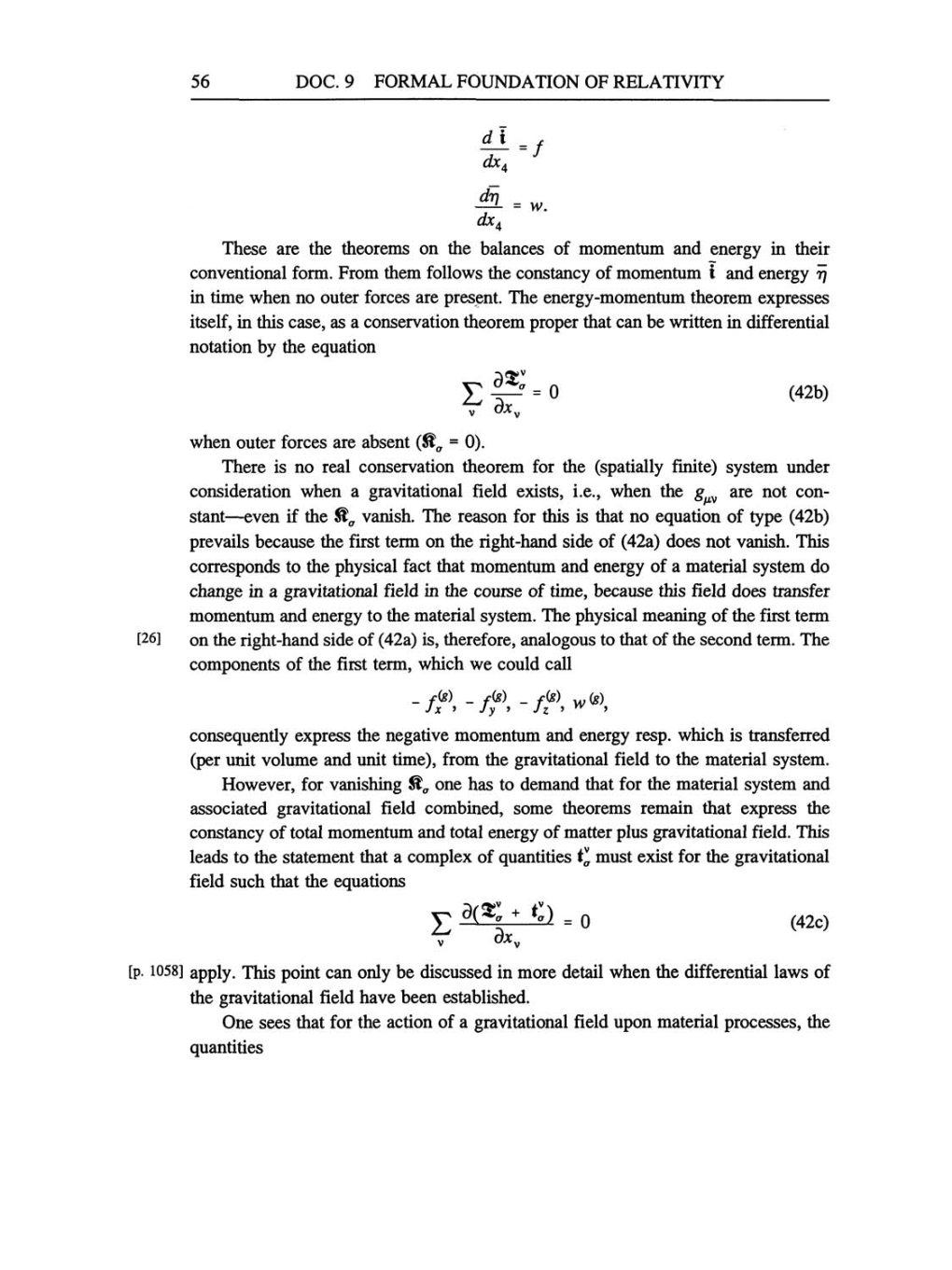56 DOC. 9 FORMAL FOUNDATION OF RELATIVITY
d_i
dxA
=
/
[26]
d-n'
=
w.
dx
These
are
the theorems
on
the balances of momentum and
energy
in their
conventional form. From them follows the
constancy
of
momentum
i
and
energy
77
in time when
no
outer forces
are
present.
The
energy-momentum
theorem
expresses
itself,
in this
case,
as a
conservation theorem
proper
that
can
be written in differential
notation
by
the
equation
?fr-°
(42b)
when
outer
forces
are
absent
(ßa
=
0).
There is
no
real conservation theorem for the
(spatially
finite)
system
under
consideration when
a
gravitational
field
exists, i.e.,
when the
guv are
not
con-
stant-even if the
Ro
vanish. The
reason
for this is that
no equation
of
type (42b)
prevails
because the first term
on
the
right-hand
side of
(42a)
does not vanish. This
corresponds
to
the
physical
fact that momentum and
energy
of
a
material
system
do
change
in
a gravitational
field in the
course
of
time,
because this field does transfer
momentum
and
energy
to
the material
system.
The
physical meaning
of
the
first term
on
the
right-hand
side of
(42a) is,
therefore,
analogous
to
that of
the
second
term.
The
components
of
the
first
term,
which
we
could call
-
Afe),
-
ff\
- /zfe)-
w *
consequently express
the
negative
momentum and
energy resp.
which is transferred
(per
unit volume and unit
time),
from the
gravitational
field
to
the
material
system.
However,
for
vanishing
Ro one
has
to
demand that for
the
material
system
and
associated
gravitational
field
combined,
some
theorems remain that
express
the
constancy
of
total
momentum and total
energy
of
matter
plus gravitational
field. This
leads to the
statement
that
a
complex
of
quantities
tva
must
exist
for
the
gravitational
field such that the
equations
£
d(K
+
tp
_
dx
=
0
(42c)
[p.
1058] apply.
This
point
can
only
be
discussed
in
more
detail when the differential laws
of
the
gravitational
field have been established.
One
sees
that for the
action
of
a
gravitational
field
upon
material
processes,
the
quantities
